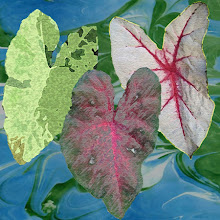Saturday, June 19, 2010
Grazing on the Edge of Majesty, the Cliffs of Slieve League
We had a lovely night's sleep at an old plantation house in Ardara. Our room opened onto a rose garden overlooking a valley of sheep grazing on bog-blanketed hillsides. After yet another typically delicious traditional Irish breakfast that keeps us fueled until dinner time, we once again drove over narrow hair-pinned roads through more sheep, this time on the road, to the little town of Teelin. Here, we found the car park for the Slieve League and took the walk atop the cliffs to spectacular vantage points. These are the highest cliffs in all of Europe, and they drop dramatically into the Atlantic Ocean on Ireland's West Donegal coast. The weather today was perfect: clear sky and bright sun, but the wind was brisk and chill, making it difficult to hold the camera steady.
We have seen sheep all over Ireland: in long narrow pastures, clinging to hillsides, along roadsides, and in farmyards. The sheep on Slieve League, however, made me marvel at how adept they are to living right out on the edge of the world, braving the elements, listening to the stories of the winds. They are none the worse for wear and seem quite content to make good use of the landscape for their simple needs. We watched for several minutes as a great big sheep gave himself a full body massage against a rock. There were nursing ewes, right out on the edge of the cliff, parenting with clear-eyed acceptance of the dangers of loose footing at every turn. Yet they are content, seemingly worry free. Granted, the sheep are gated and fenced in specified areas, and no matter how independent and self sufficient they appear to be through my lens, danger doesn't give any one part of God's choir a free pass. The animal kingdom, especially, is wired to sense the loose gravel of life more acutely than we humans. Maybe it is the way the sheep live on the edge in spite of it all that I admire. Perhaps I would do better to step to the edge more often. I might be less rattled by roundabouts and hard to find street signs.
Before coming into Sligo where we'll stay for two nights, we stopped off to see Yeats's final resting spot at Drumcliffe Church where his great-grandfather was a rector. Although Yeats was born and lived for some time in Dublin, Sligo seems to be the Irish touchstone in Yeats's pocket as his writing often mentions the place names of the area and draws upon his memories of time spent here with his grandparents. The church that stands now was built in the early 1800s on the sight of an old monastery founded by St. Columcille in 574. This historical site is where the Drumcliffe High Cross and Round Tower can also be seen. There is a lovely cafe here and an art gallery. In Sligo town, there is a charming statue of Yeats, his clothing tailored with words from his poems and plays.
Subscribe to:
Post Comments (Atom)




No comments:
Post a Comment